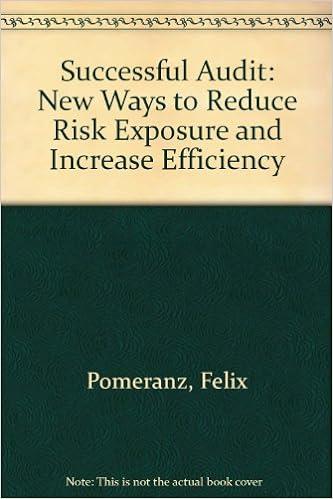Answered step by step
Verified Expert Solution
Question
1 Approved Answer
PLEASE ONLY FILL BOXES THAT ARE EMPTY BLUE Montoure Company uses a perpetual inventory system. It entered into the following calendar-year purchases and sales transactions.
















PLEASE ONLY FILL BOXES THAT ARE EMPTY BLUE
Montoure Company uses a perpetual inventory system. It entered into the following calendar-year purchases and sales transactions. Units Sold at Retail Units Acquired at Cost 600 units @ $45 per unit 400 units @ $42 per unit 200 units @ $27 per unit Date Activities Jan. 1 Beginning inventory Feb. 10 Purchase Mar. 13 Purchase Mar. 15. Sales Aug. 21 Purchase Sept. 5 Purchase Sept. 10 Sales Totals 800 units @ $75 per unit 100 units @ $50 per unit 500 units @ $46 per unit 600 units @ $75 per unit 1,400 units 1,800 units S Required: 1. Compute cost of goods available for sale and the number of units available for sale. Required: 1. Compute cost of goods available for sale and the number of units available for sale. Cost of goods available for sale Number of units available for sale units 2. Compute the number of units in ending inventory. Ending inventory units 3. Compute the cost assigned to ending inventory using (a) FIFO, (b) LIFO, (c) weighted average, and (c) specific identification. For specific identification, units sold consist of 600 units from beginning inventory, 300 from the February 10 purchase, 200 from the March 13 purchase, 50 from the August 21 purchase, and 250 from the September 5 purchase. Complete this question by entering your answers in the tabs below. Perpetual FIFO Perpetual LIFO Weighted Average Specific Id Compute the cost assigned to ending inventory using FIFO. (Round your average cost per unit to 2 decimal places.) Perpetual FIFO: Cost of Goods Sold Goods Purchased # of Cost per units unit Cost per cost of Goods Sold Cost per # of units sold Date Inventory Balance Inventory # of units unit Balance 600 $ 45.00 = $ 27,000.00 unit Jan 1 Feb 10 Mar 13 Mar 15 Aug 21 Sept 5 Sept 10 Totals $ 0.00 $ 0.00 Compute the cost assigned to ending inventory using LIFO. (Round your average cost per unit to 2 decimal places.) Perpetual LIFO: Goods Purchased Cost of Goods Sold Inventory Balance Cost per Cost per Date # of units # of units sold Cost per cost of Goods Sold unit # of units unit unit Inventory Balance $ 27,000.00 Jan 1 600 @ $ 45.00 = Feb 10 Mar 13 Mar 15 Aug 21 Sept 5 Sept 10 0 Totals $ 0.00 Compute the cost assigned to ending inventory using weighted average. (Round your average cost per unit to 2 decimal places.) Weighted Average Perpetual: Goods Purchased # of Date units unit Jan 1 Cost per Cost of Goods Sold Cost per Cost of Goods Sold unit # of units sold Cost per Inventory Balance Inventory # of units unit Balance 600 @ $ 45.00 = $ 27,000.00 Feb 10 Average Mar 13 Mar 15 Aug 21 Average Sept 5 Sept 10 Totals 0.00 4. Compute gross profit earned by the company for each of the four costing methods. (Round your average cost per unit to 2 decimal places.) FIFO LIFO Weighted Average Specific Identification Sales Less: Cost of goods sold Gross profit $ 0 S 0 $ 0 S 0 5. The company's manager earns a bonus based on a percent of gross profit. Which method of inventory costing produces the highest bonus for the manager? Weighted Average FIFO Specific Identification O LIFO Compute the cost assigned to ending inventory using specific identification. For specific identification, units sold consist of 600 units from begin inventory, 300 from the February 10 purchase, 200 from the March 13 purchase, 50 from the August 21 purchase, and 250 from the Septembe purchase. (Round your average cost per unit to 2 decimal places.) Specific Identification Cost of Goods Available for Sale Cost of Goods Sold Ending Inventory # of units Cost per unit Cost of Goods Available for Sale # of units sold Cost per unit Cost of Goods Sold # of units in ending inventory Cost per unit Ending Inventory 600 $ 45.00 $ 27,000 0 $ 45.00 S 0 Beginning inventory Purchases: Feb 10 400 $ 42.00 300 $ 42.00 12,600 100 4,200 $ 42.00 $ 27.00 March 13 200 16,800 5,400 5,000 $ 27.00 0 0 100 $ 50.00 0 $ 50.00 0 Aug 21 Sep 5 500 $ 46.00 23,000 0 $ 46.00 0 Total 1,800 $ 77,200 300 $12,600 100 $ 4,200 4. Compute gross profit earned by the company for each of the four costing methods. (Round your average cost per unit to 2 decimal places.) Answer is not complete. FIFO LIFO Weighted Average Specific Identification Sales Less: Cost of goods sold Gross profit S 0 s 0 $ 0 $ 0 5. The company's manager earns a bonus based on a percent of gross profit. Which method of inventory costing produces the highest bonus for the manager? Weighted Average FIFO Specific Identification LIFOStep by Step Solution
There are 3 Steps involved in it
Step: 1

Get Instant Access to Expert-Tailored Solutions
See step-by-step solutions with expert insights and AI powered tools for academic success
Step: 2

Step: 3

Ace Your Homework with AI
Get the answers you need in no time with our AI-driven, step-by-step assistance
Get Started


